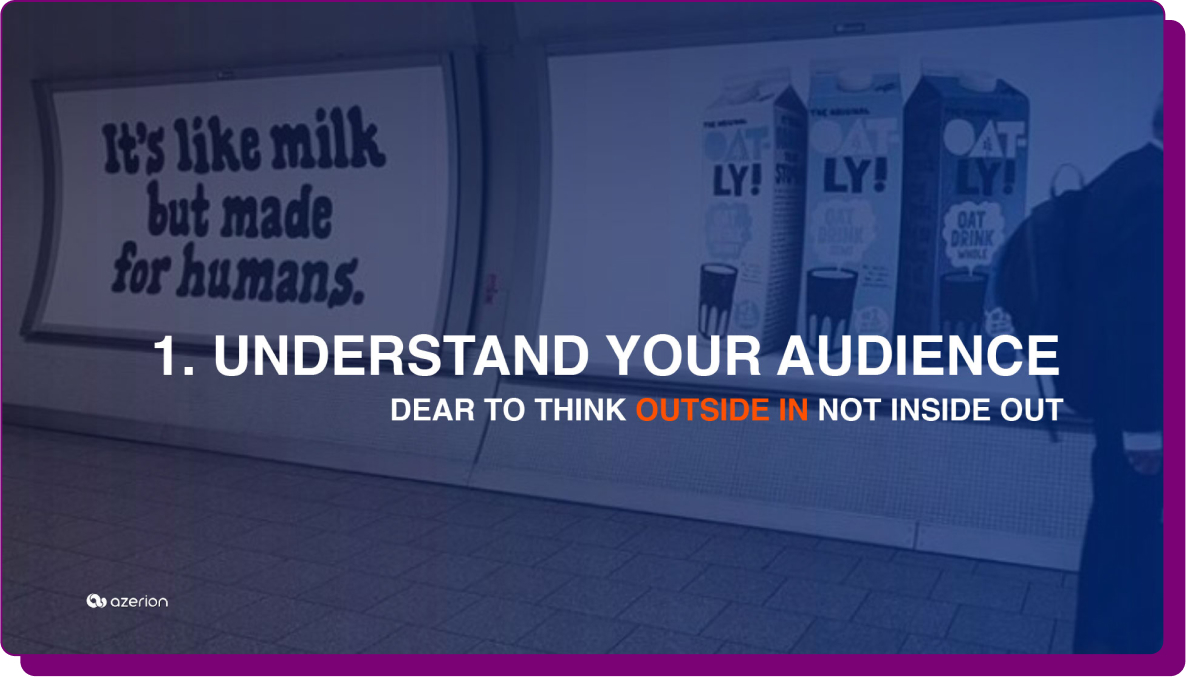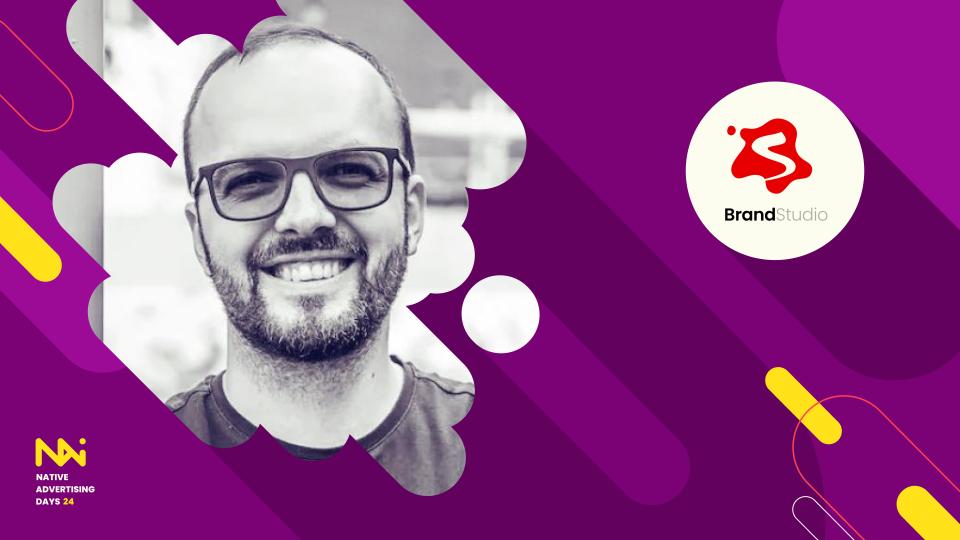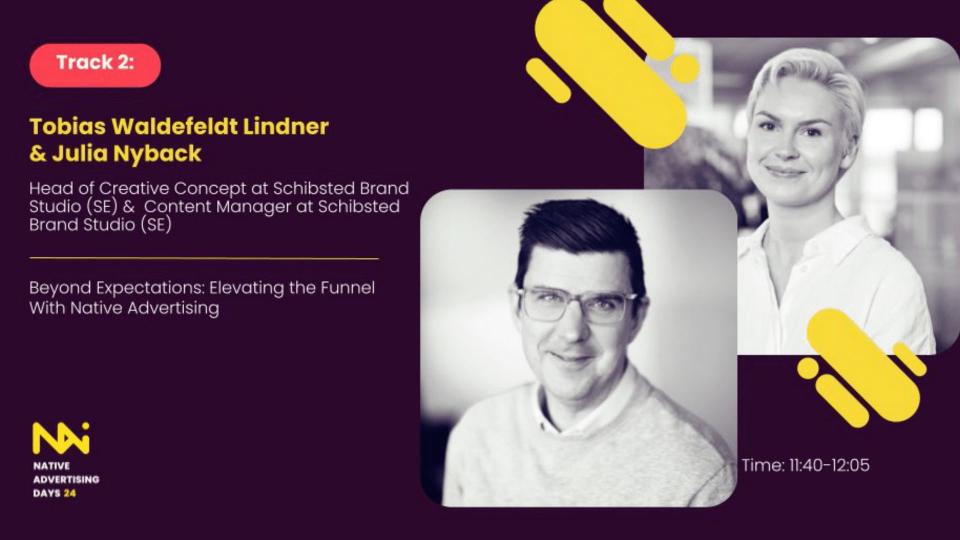This content is for members only
Supercharge your native advertising campaign
As a member of the Native Advertising Institute you will have access to the tools you need to win in native advertising.
Become a Corpfluencer – What Corporations Can Learn From Influencers
At Native Advertising Days 2024 in Copenhagen, Henrik Smolak, Country Director Sweden at Azerion, shared a five-point framework for becoming a "Corpfluencer" — a corporate influencer who captivates and engages with purpose.
Point 1: Understand Your Audience
To truly engage, brands need to think outside in, not inside out. Rather than focusing on what the brand wants to say, the key is understanding what the audience values and tailoring content accordingly. A great example is Oatly, which shifted its narrative from being a lactose-free alternative to positioning itself as "milk made for humans," leading to its massive success.

Henrik emphasised that brands must deliver content that resonates with their audience's interests. It’s not about hijacking attention but about creating meaningful connections by aligning with the needs and desires of those you aim to reach.
Point 2: Start Small, Think Big, and Be Continuous
Success doesn’t happen overnight. Henrik highlighted the importance of starting small, thinking big, and remaining consistent in your efforts. Whether it’s a podcast, a business venture, or a community, building gradually through trial and error is the key to long-term growth.
Consistency, not perfection, leads to results. Just like his cat community and pizza chain, Henrik showed that focusing on small, steady improvements while keeping a bigger vision in mind will ultimately drive success. Every small action compounds over time.
Point 3. Communicate, Distribute, and Get Heard
No matter how great your content is, it’s meaningless without an audience. Henrik stressed the importance of focusing on distribution to ensure that your message reaches the right people. He used his podcast’s success as an example, highlighting how strategic collaborations can help build audience reach.

Brands must invest in the right channels to distribute their content effectively. Without proper distribution, even the most valuable content will go unnoticed, limiting the brand’s potential to grow and influence.
Point 4. Get to Know Your Customer
Henrik argued that modern marketing often focuses too much on immediate returns and capturing attention rather than building long-term value. To truly succeed, brands must understand their customers' needs and deliver content that adds value over time.
He pointed to examples like Karma’s rebrand, which shifted its messaging to focus on zero food waste, aligning with its audience’s values. This approach leads to deeper engagement, trust, and ultimately, more loyal customers.
Point 5. Dare to Be Creative and Think Long-Term
Creativity is often sacrificed for quick returns, but Henrik encouraged brands to stand their ground and think long-term. He noted that a 15-year-old with a smartphone can often create more engaging content than a large corporate team because they focus purely on creativity and interaction.

Brands need to reclaim that creative spark and stop being afraid of taking risks. Long-term thinking, combined with bold creativity, will ensure brands not only survive but thrive in the digital age.
 Henric Smolak
Henric Smolak


















